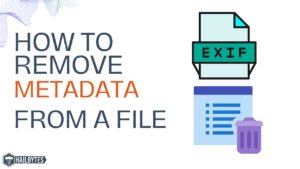Bypassing Internet Censorship with TOR

Introduction
In a world where access to information is increasingly regulated, tools like the Tor network have become crucial for maintaining digital freedom. However, in some regions, internet service providers (ISPs) or governmental bodies may actively block access to TOR, hindering users’ ability to bypass censorship. In this article, we’ll explore how individuals can overcome these restrictions using bridges and pluggable transports within the TOR network.
TOR and Censorship
TOR, short for “The Onion Router,” is open-source software that enables users to browse the internet anonymously by routing their traffic through a series of nodes, or relays, operated by volunteers worldwide. This process helps to conceal a user’s identity and location, making it difficult for third parties to track their online activities. However, in regions where internet censorship is prevalent, ISPs or governmental entities may block access to TOR, limiting users’ ability to utilize this tool for accessing uncensored information.
Bridges and Pluggable Ports
One common method employed by ISPs to block access to TOR is by preventing users from connecting to publicly known relays. To circumvent this restriction, TOR offers a solution known as bridges. Bridges are private relays that are not publicly listed, making them more difficult for ISPs to identify and block. By using bridges, users can bypass censorship measures implemented by ISPs and access the Tor network anonymously.
In addition to blocking access to known relays, ISPs may also monitor users’ internet traffic for patterns associated with TOR usage. Pluggable transports offer a solution to this problem by obfuscating TOR traffic to make it appear as regular internet traffic. By disguising TOR traffic as something else, such as video calls or website visits, pluggable transports help users evade detection and bypass censorship measures imposed by ISPs.
How to Use Bridges and Pluggable Transports
To utilize bridges and pluggable transports, users can follow these steps:
- Visit bridges.torproject.org to obtain bridge addresses.
- Select the type of pluggable transport desired (e.g., obfs4, meek).
- Alternatively, if the TOR Project website is blocked, users can email bridges@torproject.org with the subject line “get transport obfs4” (or the desired transport) to receive bridge addresses via email.
- Configure the TOR browser or alternative Tor client to use bridges and pluggable transports.
- Connect to the TOR network using the provided bridge addresses.
- Verify connection to the TOR network by checking the connection status within the Tor browser or client.
Conclusion
In conclusion, bridges and pluggable transports effectively bypass internet censorship and access the Tor network in regions where access is restricted. By leveraging private relays and obfuscating Tor traffic, users can protect their privacy and access uncensored information online. However, it’s important to note that these measures should only be used when necessary, and users should exercise caution to ensure the security of their online activities.
For those seeking alternative solutions to internet censorship, options like HailBytes SOCKS5 proxy on AWS provide additional avenues for bypassing restrictions while maintaining a fast and secure internet connection. Additionally, HailBytes VPN and GoPhish offer further capabilities for enhancing privacy and security online.








